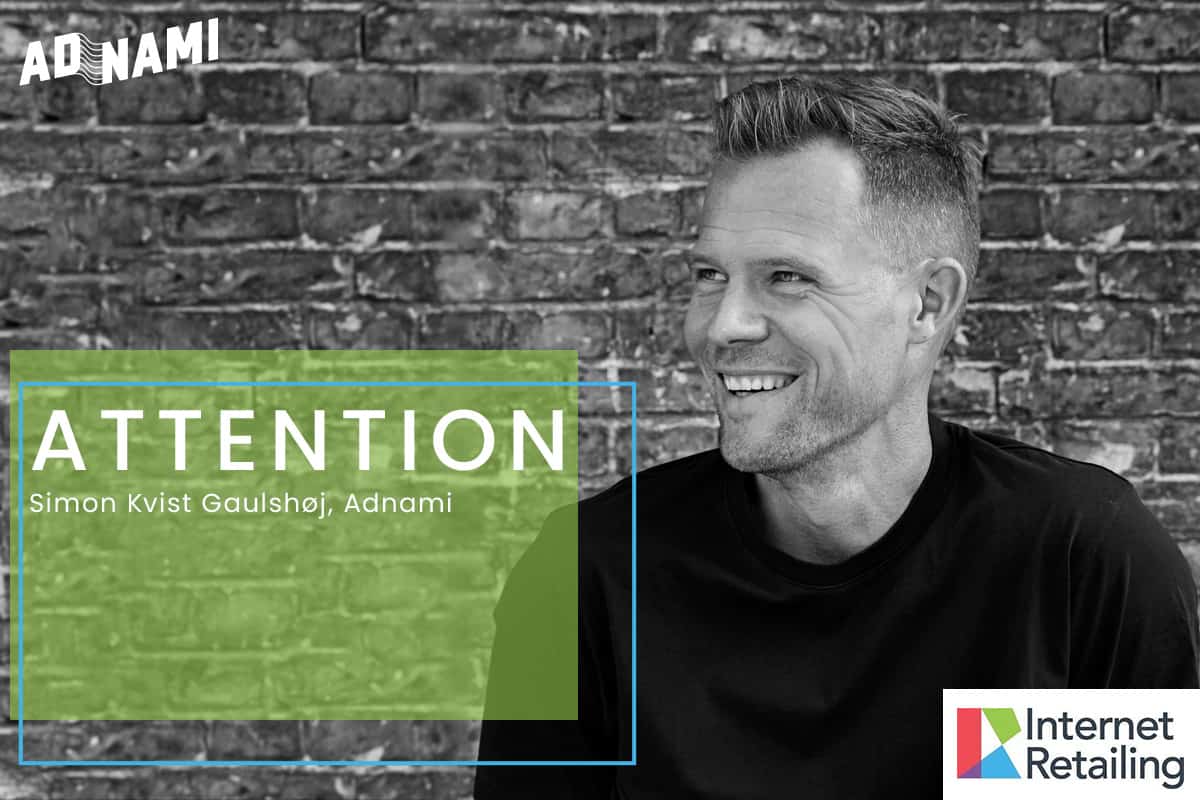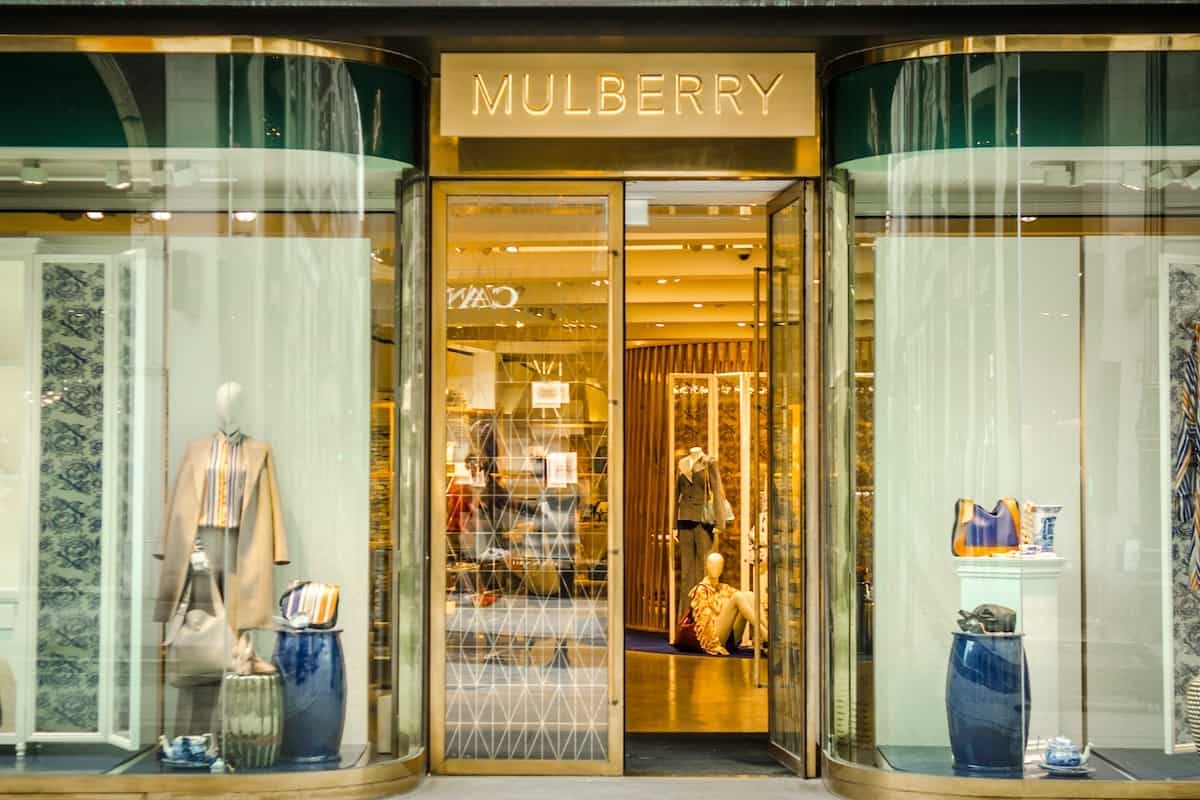Adnami CEO Simon Kvist Gaulshøj tells us how the marketing industry can ride out the recession, why measuring ‘attention’ will help brands understand their consumers, and how a downturn can keep companies fighting fit
It seems we’re heading for a global recession. Historically companies might cut their marketing budgets, but it feels like things might be different this time. Do you believe companies appreciate why cutting their marketing budget might be considered short-sighted?
Various pieces of historic marketing research carried out by the likes of Peter Field have concluded that the companies that spend through a recession will enjoy brand benefits and boosted incremental sales in the following years. And I subscribe to this theory. But, in practice, it’s never that simple.
It’s true that bands must continue to invest in marketing if they want to sell products and capture market share from the competition, but the reality is that in an economic downturn, companies sell fewer products and budgets are smaller. The result is that advertisers will look at these budgets with added scrutiny in the search for hard, documented evidence that each product, marketing investment and channel provides value. If any marketing element doesn’t carry its own weight, most CMOs will make the cut and save some cash.
For this reason I think measurement will be extremely important in the next three years. Advertisers that grasp the implications of attention for creative production, media planning and measurement will be able to provide the best chance of marketing success – as well as the evidence to prove their worth.
Rather than cutting their budget, how can companies be clever with their marketing spend to achieve greater value? And how can the ‘attention’ economy help here?
The attention economy is going to be critical for brands looking to really understand, at a granular level, how their campaigns engage an audience. The challenge is that there’s only a finite amount of consumer attention in the world, but a nearly infinite number of digital adverts. Cutting through this noise is not easy. Attention is going to be very helpful through this recession, because it is the first time that our industry has access to a metric, based on behavioural studies, that understands and measures how humans in fact consume advertising. This provides us with a highly accurate picture of what ‘good’ really looks like for the first time.
Video is an obvious channel to invest in, and enables brands to get a lot of attention from a single impression. This is low hanging fruit for all brands, and can be implemented via the usual video channels, but also through new impactful video formats, which in my opinion is still a missed opportunity for many brands.
Finally, a project we have run with Lumen Research established that ads distributed in a context where people read a lot – news sites, for example – have a tendency to generate a lot more attention than, say, quick-scrolling social media platforms. Our research of attention data has challenged and changed the way we think about planning, buying, measuring and learning from digital ads.
What can publishers do to prepare for a recession (and maximise its opportunities)?
Publishers need to do four things. Firstly, they need to make sure they have ad products that go beyond standard display. Brand advertising is a growth category, unlike display – as are all formats that drive attention, such as video. Publishers need to gear up on their format, rich media and video offerings in order to respond to the market demand.
Secondly, publishers need to make sure that they document their campaign’s performance, and are able to compare this with other channels in order to justify the spend and demonstrate its value. Thirdly, they need to tap into an ecosystem mindset that offers scale to the buy side and easy of activation. These need to be programmatic, reasonably priced and simple to execute.
Finally, publishers need to consider their relationships with any third-party monetisation partners. They should focus on decreasing their dependency on third parties arbitraging their inventory and thereby increasing revenue, working media value as well as the quality and control of their campaigns.
And in more general terms, what should be the industry’s focus over the next few years?
The industry has to think about attention throughout the entire media buying value chain, from creative production, to distribution, optimisation and measurement. There’s no doubt that attention optimisation is the next big thing for our industry, and something that we’re working on day and night. This will allow advertisers to understand the value of bid requests in real time, and subsequently optimise the impressions they’re buying on the fly.
In a similar vein, advancing the use of standardised automation in attention buying and measurement will be critical. Currently attention insights are manually driven by a number of different research companies. This needs to change, and leaning on automation will bring the cost of buying attention down significantly, and advance its adoption and understanding.
How can marketers use data to focus their efforts?
The most important thing is that advertisers need to understand their data – otherwise, what’s the point in having it? Retail media is an interesting sector, because it has access to fantastic first-party consumer data. Advertisers can use this to offer the right ad to the right user at the right time, principally via ecommerce platforms but also elsewhere. And this is why data has the potential to be so powerful.
With retail media, the audience is far down the purchase funnel, and it’s here that you want to use your data, in harmony with creative ad formats, to target customers near the point of conversion, where they might be susceptible to making additional purchases related to their original items. At this critical moment in which you have a final opportunity to engage the consumer, you need to use the best creative in an amazing format to influence the consumer to a further purchase, and this is all thanks to the use of data. It has led you to this point.
Does a recession offer advertisers and publishers any unique opportunities?
I think a recession absolutely offers our industry a number of opportunities. As Albert Einstein said: “In the midst of every crisis lies great opportunity.” A recession forces us to generate more with less, and be more efficient with what we have. A downturn offers the chance to operate smartly, outmanoeuvre the competition and grow market share.
However, it also offers each business the chance to look internally and appraise its products and services, culture, workforce and general health. We’ve enjoyed quite a few years of boom in which anything is possible and the economy has just gone up and up, but it’s unrealistic to think this will last indefinitely. A recession offers a healthy opportunity for many businesses – in all industries – to take a long, hard look in the mirror, tighten the belt, and make necessary changes to ensure they are fighting fit for the challenges ahead.
—
Simon Kvist Gaulshøj is CEO of Adnami, a technology company which provides high-impact digital ads, such as scrollers, wallpapers and skins.
Adnami enables advertisers to create and publishers to sell highly creative formats at scale easily, transparently and programmatically.
Simon is passionate about driving Internet companies forward. With a decade of online media experience on the business development, buying and sales side, his determination and focus leads to strong results.
Simon devises ground-breaking product strategies thanks to his desire to seek out opportunities to do new things, to do things differently and to do them faster and more efficiently. He is an expert on topics such as the challenges of ‘cookieless’ advertising, and how publishers can leverage creativity in digital technology in order to boost monetisation of premium offerings.
—

Adnami specialises in programmatic, high-impact advertising solutions and its templated and platform-agnostic approach to high-impact advertising, provides a scalable and automated solution to run attention-grabbing and impactful advertising campaigns. Adnami works with a growing portfolio of publishers, agencies and advertisers, reaching over 300 million unique every month across 3000 domains. With offices in Copenhagen, Stockholm, London, Hamburg and Paris, Adnami continues to expand its solutions for high-impact advertising, working with a diverse range of brand clients such as Heineken, BMW, American Express, Disney, Samsung and Amazon.






